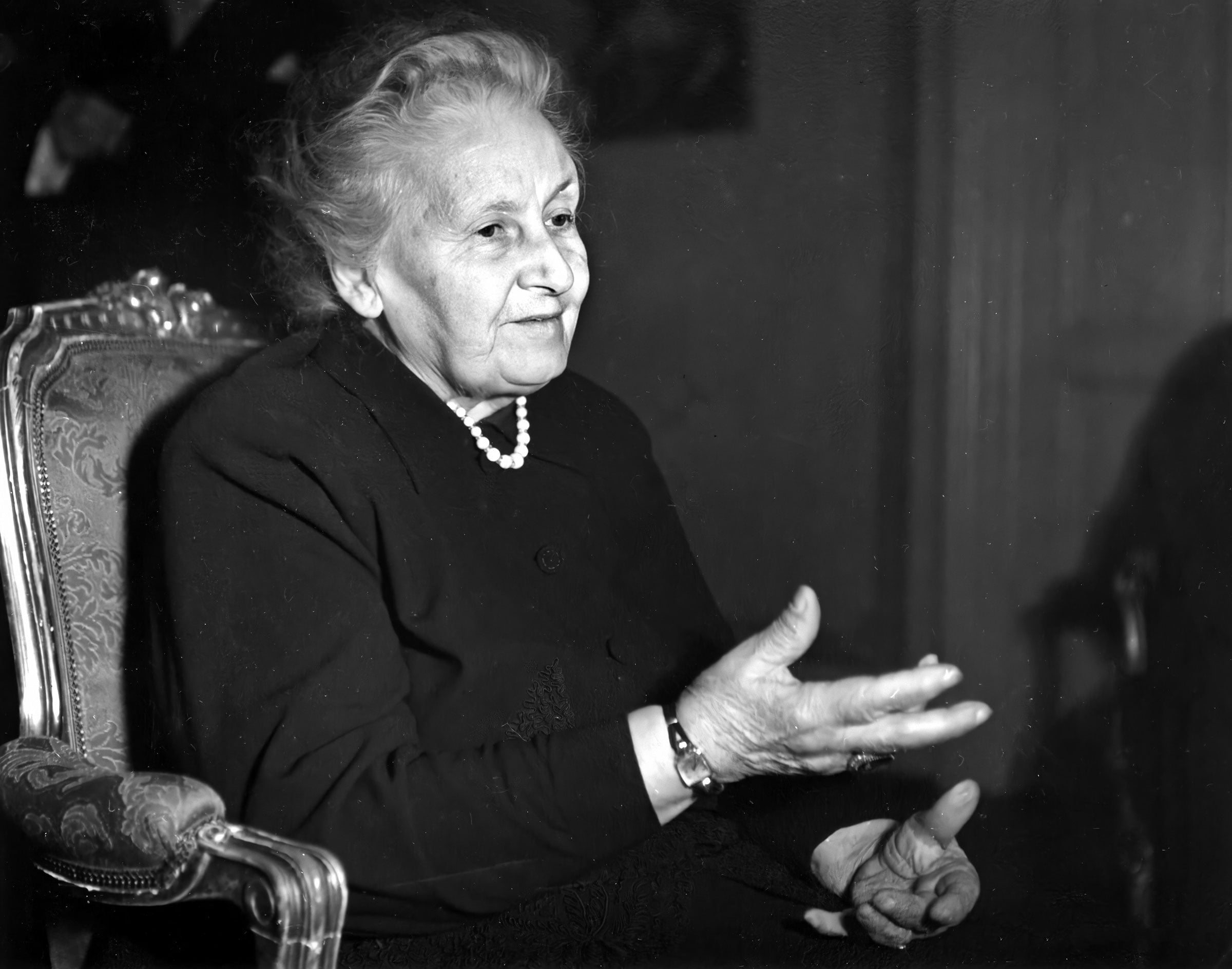
Our Curriculum
Dr. Maria Montessori structured classroom exercises based on a child’s natural inclinations. She used familiar objects from home life to link the classroom to the child’s home. Young children find tasks like washing dishes, preparing vegetables, and polishing shoes exciting because they allow for imitation and independence. These skills build human dignity and self-sufficiency. Maria Montessori believed in the importance of independence and self-sufficiency for a child’s sense of achievement and joy.


Brains develop through movement and information received through the senses. Maria Montessori therefore focused on giving children as many sensory experiences as possible to allow them to form strong neural brain connections. A young child meets the world around him through the constant use of all his senses. To examine a new object, a baby will look at it, hold it in his hands to feel the texture and weight, shake it, lick it, or even try to bite it. Dr. Montessori felt that this was the ideal time to give children equipment which would sharpen their senses and enable them to understand the many impressions they receive through them. Each of the Sensorial Materials isolates one defining quality such as colour, weight, shape, texture, size, sound, smell, etc. The equipment emphasizes one specific quality by eliminating or minimizing other differences. Thus, the sound boxes are all the same size, same shape, same colour, and same texture; they differ only in the sounds which are made when the child shakes them. Sensorial works also prepare a child for math, geometry, language, writing, and logical thinking
Practical Life and Sensorial materials provide a strong foundation for mathematics. The knowledge gained from both these subjects carries over into the Montessori Math curriculum, where a child is able to discover math’s with a hands-on approach. Arithmetic, Algebra, and Geometry are all incorporated in the form of indirect learning, and allow a child to physically manipulate the material in order to form a concrete understanding of math’s, and make it easier to understand abstract concepts in their later school years.


To be able to read and write, a child must develop two different skills: 1) he must commit to memorizing the shape of the letters and their corresponding sounds, and 2) he must develop the muscular skill necessary for using the pencil with control. The Montessori approach allows the child to learn both the shapes and sounds of the letters in a way that is completely independent from perfection of the motor skill. Therefore, a Montessori student learns to write not by writing, but by performing several purposefully structured activities which prepare the hand both indirectly and directly for facility in handwriting. During these three years in the Montessori classroom, an exciting thing happens. After he has worked for a while with the materials, the child’s motor skills and phonetic skills (which have been developing in parallel activities) converge together. When a child discovers that his hands and fingers can form letters, and that he knows how to string those letters together to make meaningful words, he has entered what Dr. Montessori called an “explosion into writing.”
The study of cultural subjects in the Montessori environment include: geography, botany, zoology, history, science and the arts (art and music). The cultural subjects are taught in a particular order called the cosmic approach (big picture to smaller parts) and shows how all life is interconnected and interdependent and how one cannot live without the other. It also satisfies the needs and tendencies of man helping the child to adapt to the world and understand his place in it. The main aim of the culture area is not to teach the facts of the sciences but rather to plant seeds of interest and awe in the mind of the child.

What is Montessori?
Primary classes are composed of a 3-year age span, including children ages 3-6 years. This allows for peer teaching, broad social interactions, individual differences in learning style and pace, and creates a social community of family. It provides the youngest students with a graded series of role models and the older students with peer teaching opportunities for reinforcement of learning.
Each child learns and develops at her/his own pace through the use of materials and lessons introduced one on one by trained staff. The integrated curriculum is introduced sequentially and at the developmental level of each individual child, allowing every child to work to capacity and at their ability level. Each child has their own uniquely designed lesson plan based as opposed to the traditional approach of one lesson for the entire class.
Within the structure of the classroom and curriculum, children are encouraged to pursue their interests, make responsible choices for themselves and direct themselves to constructive activities. Since children’s interests vary, this opportunity results in an independent, self-motivated learner.
The school environment is prepared with a variety of specially designed Montessori materials – multi-sensory, sequential and self-correcting. Educational materials are carefully selected to meet the needs of a range of students in each class and to meet the goals of the program.
The use of materials for learning in the Montessori classroom is an integral part of the program. Based on a belief that children learn by doing, lessons for math, language and all subject areas include hands-on materials for use by the student.
The Montessori curriculum integrates many subject areas into the lesson at hand. This enables students to use their knowledge and skills in context and to see the “whole” picture.

